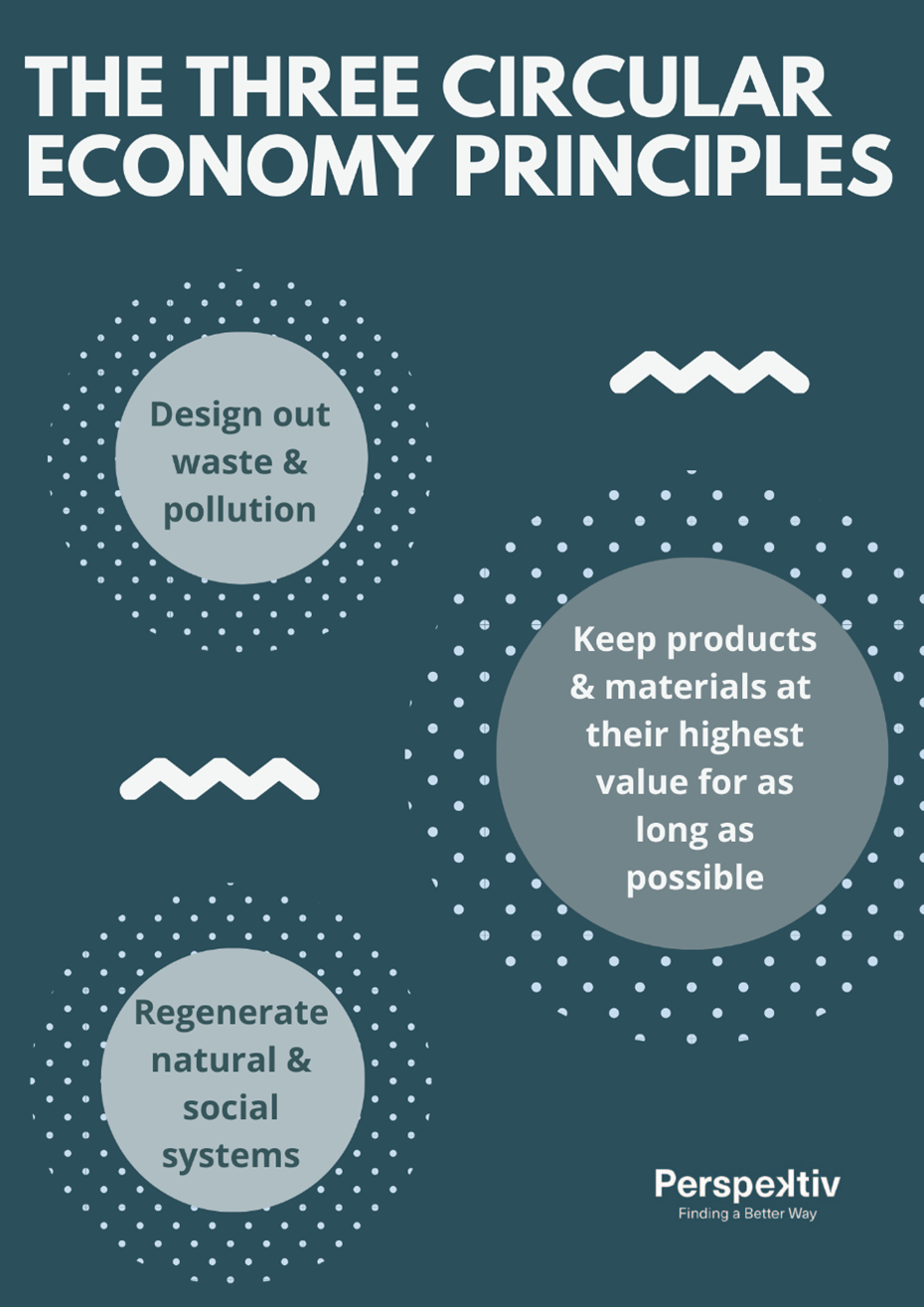One of our newest recruits, Lauren Cromarty, is a bit of a circular economy guru! She enjoys broadening her knowledge on the subject, both on a personal and professional level. Lauren recently joined Perspektiv as a Senior Sustainability Consultant in our Hobart office and is keen to share her expertise and insights on the matter.
So, what's it all about?
It’s a solution that could create $23 billion in value for Australia by 2025[1], while cutting material use by 28%[2]. Oh, and it can address 39% of global greenhouse gas emissions[3].

It might sound complicated however the circular economy is simple. It’s based on three principles – (Diagram 1.)
While some think a circular economy is about (zero) waste, it is so much more than that. We currently live in a linear economy – we take, we make, and we waste. The reality is that most things today are still designed for the linear model. It’s not sustainable and it has to change.
The circular economy embodies a number of circular design models including –
1. Resource recovery – leveraging technology to recover and reuse resource outputs. Choosing safe and circular materials to eliminate material leakage and maximising economic value of product return flows.
2. Product life extension – designing things to last. Extending the lifecycle of a product to ensure it remains useful.
3. Product as a service – a shift from ownership to access. Products are used via leasing or pay-for-use arrangements by one or many users.
4. Circular supplies – replacing traditional material inputs to reduce demand on virgin resource extraction.
5. Sharing platforms – sharing under-utilised products to reduce the demand for new products.
6. Modularity – designing products to be easily upgraded or repaired.
It’s important to acknowledge that you don’t need to embody all models to achieve a circular economy for your product or company – small initiatives can amass to a big change!
So how can Perspektiv help?
We are available to;
· Help you to circularise a linear business model
· Teach you how to distinguish between linear and circular business models
· Describe the business benefits of transitioning to a circular business model
· Design out waste and pollution from your business or product
· Plus everything in between!

Using Life Cycle Assessment (LCA) to validate the actual benefits
It can be important to validate whether your proposed solution will lead to better outcomes (I am looking at you, greenwash!). LCA can help you to assess this, and so can Perspektiv!
How else can we help?
We also have team members who are members of the Green Building Council of Australia (GBCA) who have unique experience designing, building, operating and refurbishing buildings and precincts.
Why not reap the benefits of product certification and labelling (e.g. GECA, EPD, FSC, PEFC, Climate Active)? By providing your customers comparable, objective, science-based information you can enhance your reputation and sales.
If you are interested in learning more about the Circular Economy or any of our service areas, contact one of our experts. We enjoy contemplating new challenges and opportunities and have the availability to help. Together we will find a better way!
[1] https://home.kpmg/au/en/home/insights/2020/05/potential-economic-pay-off-circular-economy-australia.html#:~:text=billion%20GDP%20boost.-,KPMG%20estimates%20that%20a%20circular%20economy%20could,a%20%2423%20billion%20GDP%20boost.&text=The%20transition%20to%20a%20circular,high%2Dresource%2Defficiency%20future. [2] https://www.circularity-gap.world/ [3] https://www.circularity-gap.world/2022

Komentarze